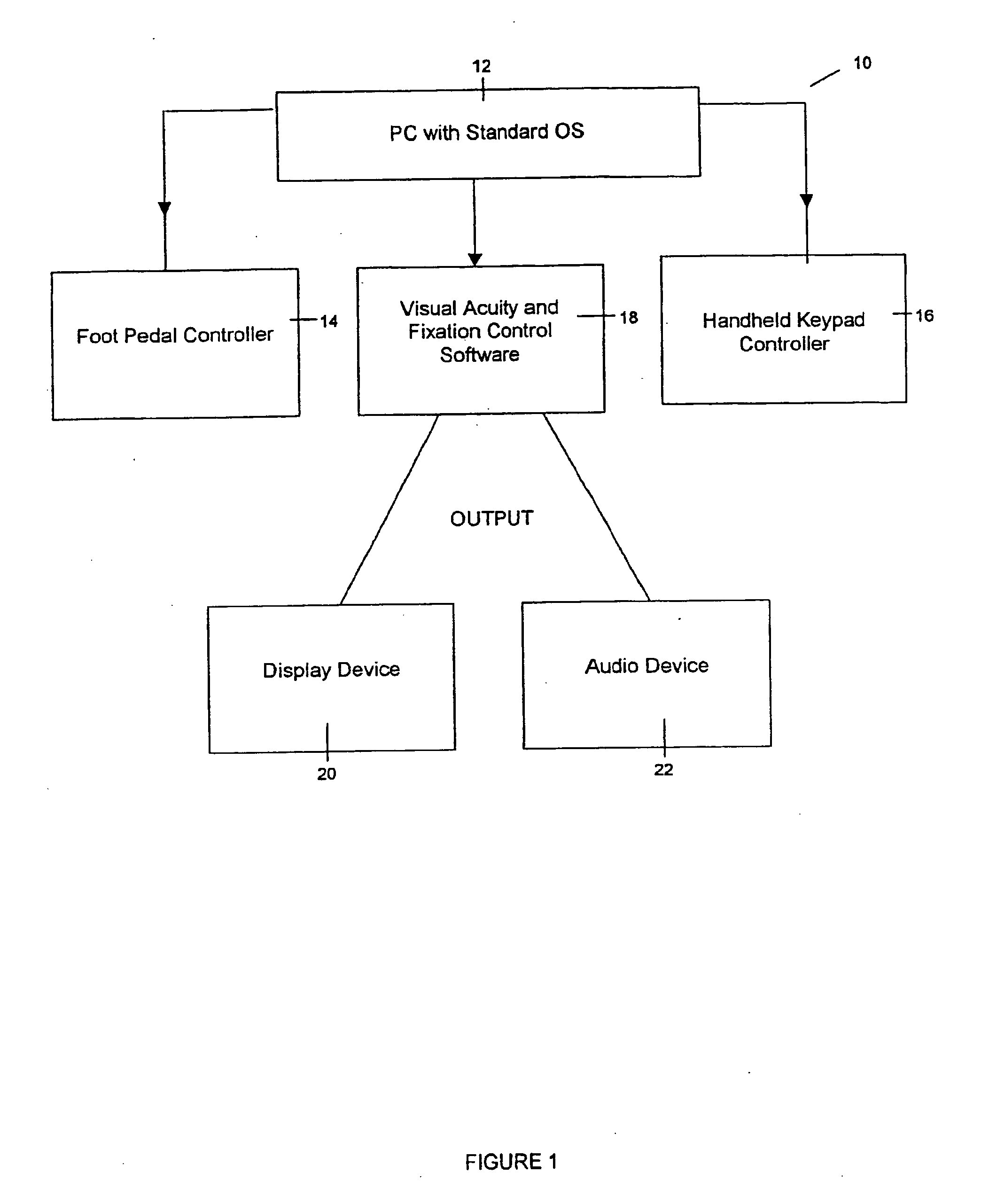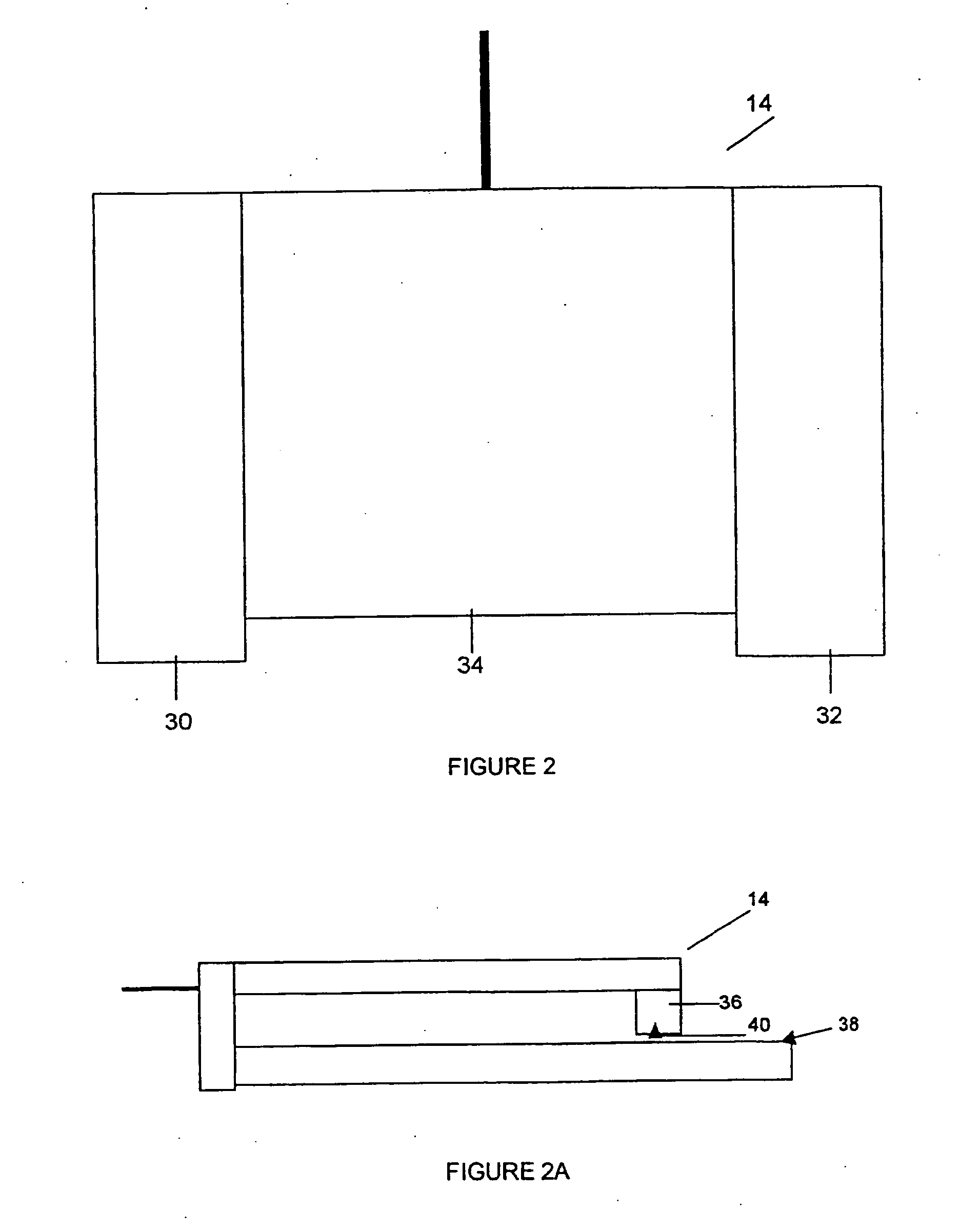Apparatus and method for testing visual acuity and fixation control
- Summary
- Abstract
- Description
- Claims
- Application Information
AI Technical Summary
Benefits of technology
Problems solved by technology
Method used
Image
Examples
Embodiment Construction
[0032] In accordance with one aspect of the present invention, an apparatus and method for conducting a visual acuity test (VAT) is provided. FIG. 1 schematically illustrates a computer-based system in accordance with a preferred embodiment of the present invention. The system includes a conventional computer 12 or central processing unit (CPU) with an operating system, such as Windows®. It is contemplated, however, that the present invention can be designed to be compatible with other computer operating systems, such as Apple®, Linux®, UNIX and so forth. The apparatus comprises a display device 20 and audio device 22 used in conjunction with a computer 12, a first controller or foot pedal controller 14, a second controller or handheld keypad controller 16 used in conjunction with control software 18 to provide video and audio output to a display device 20 and audio device 22, respectively. The method according to the present invention includes the use of a particular arrangement of...
PUM
 Login to View More
Login to View More Abstract
Description
Claims
Application Information
 Login to View More
Login to View More - R&D
- Intellectual Property
- Life Sciences
- Materials
- Tech Scout
- Unparalleled Data Quality
- Higher Quality Content
- 60% Fewer Hallucinations
Browse by: Latest US Patents, China's latest patents, Technical Efficacy Thesaurus, Application Domain, Technology Topic, Popular Technical Reports.
© 2025 PatSnap. All rights reserved.Legal|Privacy policy|Modern Slavery Act Transparency Statement|Sitemap|About US| Contact US: help@patsnap.com



